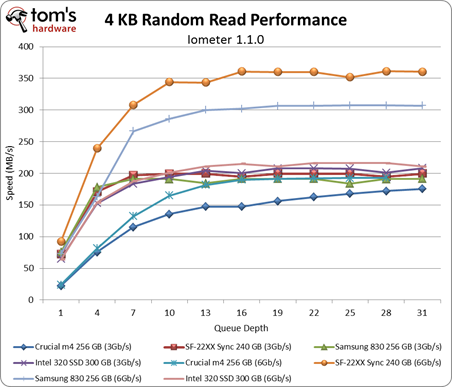Things to keep in mind:
Due to 8b/10b encoding, the maximum data transfer rates of SATA II and SATA III are 300 MB/s and 600 MB/s, respectively.
When choosing a proper interface for a drive, the concepts fully utilizes and can benefit from are quite different.
A drive with a maximum data transfer rate of 301 MB/s doesn't max out SATA III's 600 MB/s, but it will be limited by SATA II's 300 MB/s.
A drive's throughput (disk-to-computer transfer rate) is affected by both the internal (disk-to-buffer) and external (buffer-to-computer) transfer rate. The latter is determined by the interface (e.g. SATA III) and the drive, the former by the drive alone.
The interface should always be slightly faster than the drive itself or it might slow the drive down.
My motherboard currently supports both SATA II and III (3 Gb/s and 6Gb/s respectively), but after reading some online, it seems as though connecting a HDD to the 6 Gb/s is pretty much pointless.
As of right now, the fastest HDD is the Western Digital VelociRaptor WD1000DHTZ: With a SATA III interface, its maximum external transfer rate is 401 MB/s (faster than SATA II). However, this is only significant when reading data that is already buffered or when using write acceleration.
The HDD's maximum throughput is 209 MB/s, which should not be slowed down by SATA II.
If this is the case I'm going to leave my two SATA III ports open for something that can actually use it (which at this point I'm not really sure what can).
Current consumer-level SDDs can certainly benefit from SATA III: For example, the Samsung 830 has a sequential reading speed of 520 MB/s, which would be severely slowed down by a SATA II interface.
When performing random reads, the interface's speed affects the throughput far beyond its rated limit:

As you can see, none of the drives exceeds 200 MB/s with the SATA II interface; not even the Samsung 830 and OCZ Vertex 3 (SF-22XX), which pass 300 and 350 MB/s with the SATA III interface.
Furthermore, consumer-level SDDs could be much faster than even SATA III: For example, the PCIe SSD OCZ RevoDrive 3 has a maximum reading speed of 975 MB/s.
Enterprise SSDs achieve speeds far beyond SATA III's 600 MB/s: For example, the ioDrive Octal has a maximum reading speed of 6700 MB/s.
